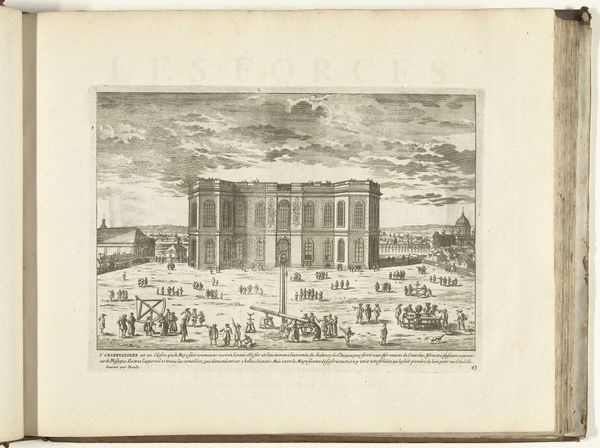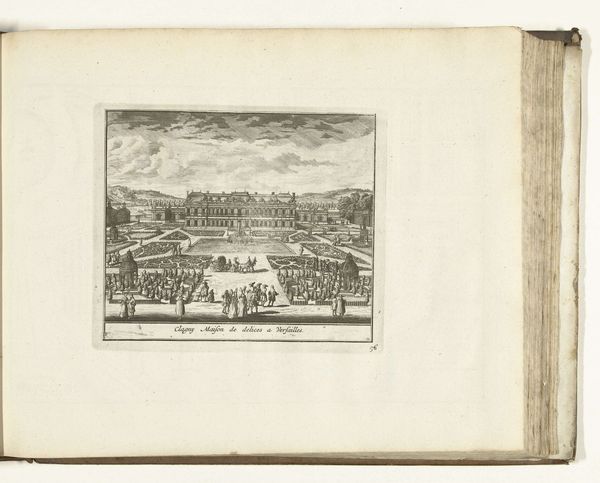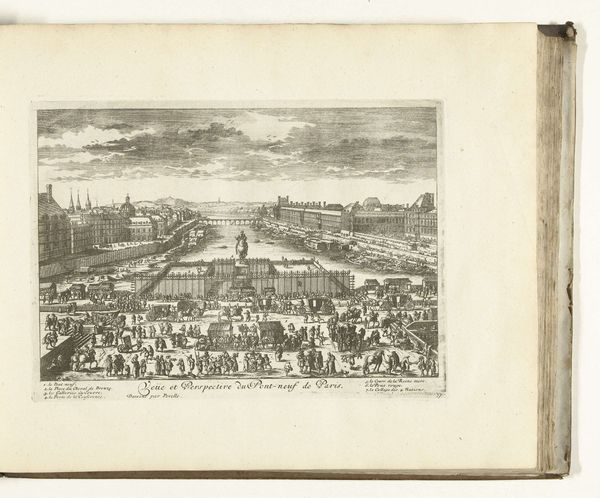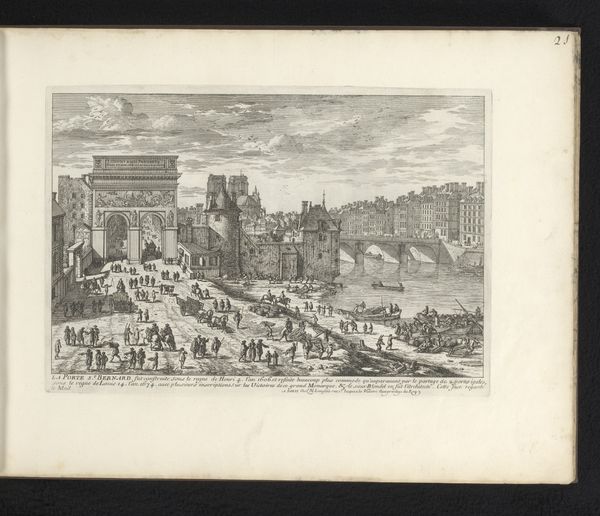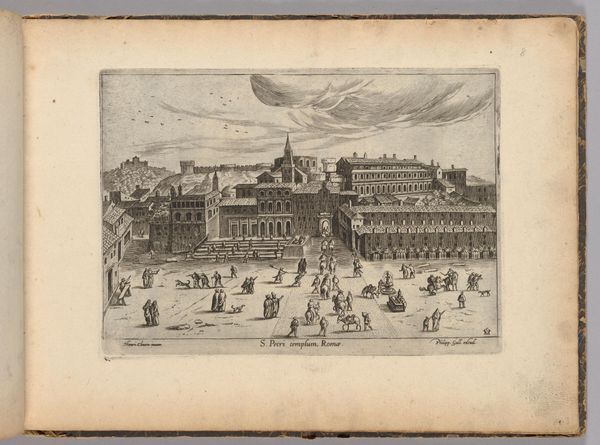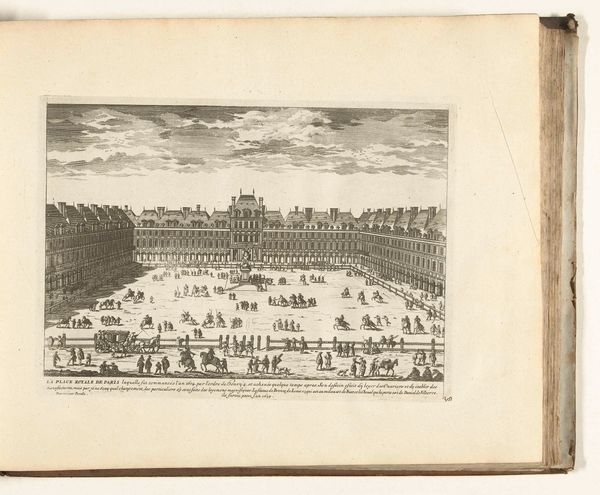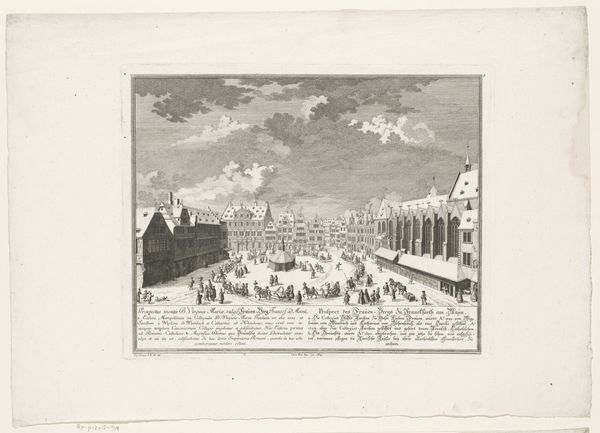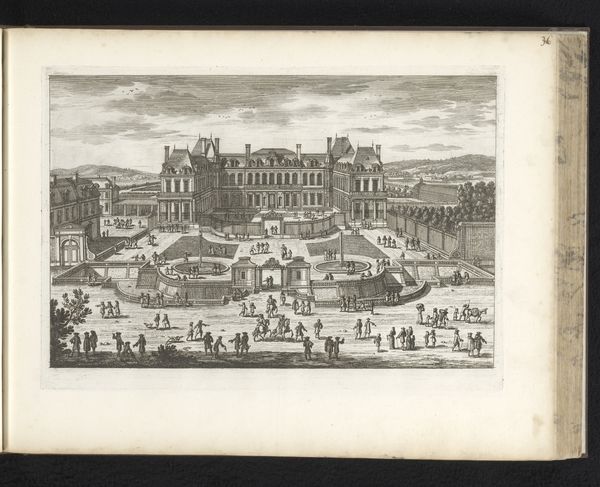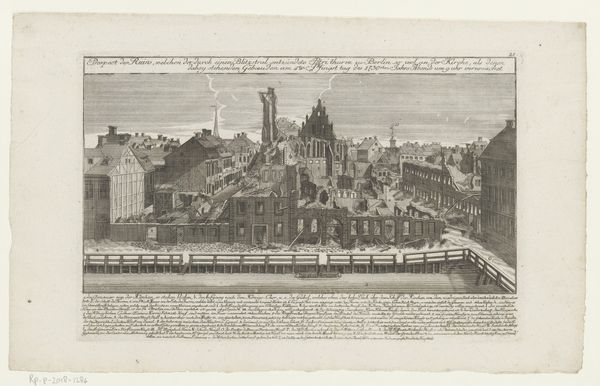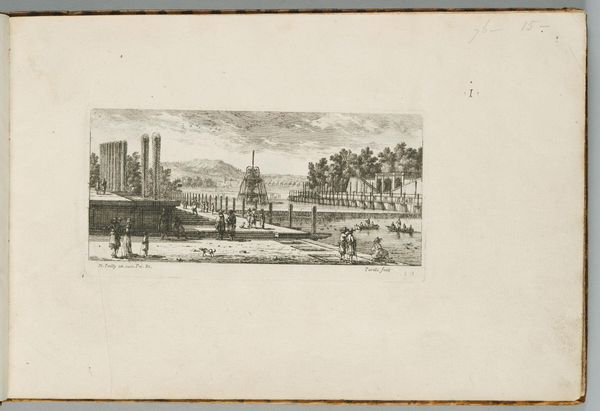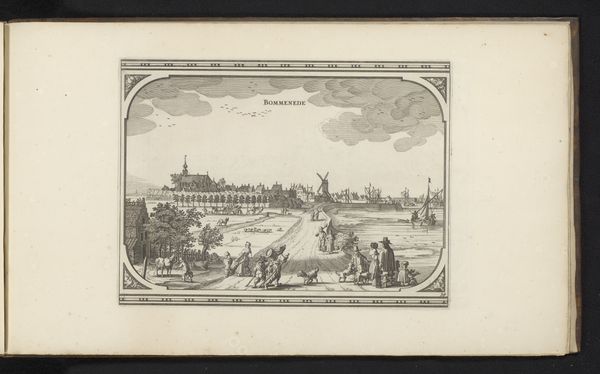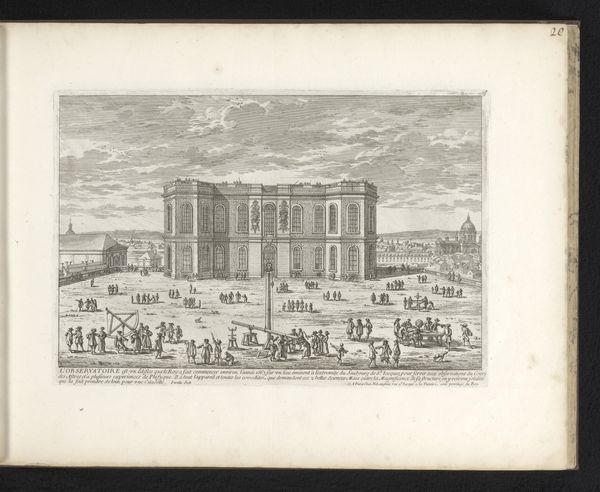
print, engraving
#
baroque
# print
#
cityscape
#
engraving
Dimensions: height 199 mm, width 274 mm
Copyright: Rijks Museum: Open Domain
Curator: Looking at this print, “Gezicht op het Place Dauphine te Parijs, 1726,” or “View of the Place Dauphine in Paris, 1726,” made via engraving, I immediately appreciate the precision of the linework and the amount of detail captured. What do you see, initially? Editor: It strikes me as a scene bustling with social stratification, the clear segregation of classes made obvious in the way the Place Dauphine seems designed to facilitate movement of commerce at different levels of the Parisian social fabric. Curator: Precisely, a functional design intended to make processes like trade or movement visible, which goes hand-in-hand with the mode of artistic production. The use of engraving as a reproducible medium democratized access to the image. Think about the workshops needed, the specialization of labor, and the intention of reaching a wide audience. Editor: And considering that wider reach, let's reflect on how this cityscape actively constructs and reinforces notions of Parisian identity. The artist is not just showing buildings, they are depicting the era’s socio-economic activities, power relations, gendered spaces...all performed within this stage of urban life. Curator: Absolutely. By focusing on a recognizable locale, the artist offers an image for Parisians to identify with, creating an almost “postcard” that affirms a collective vision. However, we have to remember that these engravings had the power to extend such a view beyond Paris, too. What does that external view do to ideas about Paris itself? Editor: It builds the cultural hegemony, doesn't it? Disseminating a very specific vision, a spectacle of sorts for those who may never access this world in material reality. Who is being invited into the performance of Parisian life through the work, and on whose terms? Curator: So while the engraving is physically accessible as an object and relatively widespread at the time, the picture represents access to a particular lifestyle and possibly also dictates a desire. The labor, materials, distribution–it is all part of an aspirational marketplace of social images and desires. Editor: Indeed. It is important to consider art's role as more than aesthetic representation but a component of power and access, visually and materially constructed. Curator: That’s right, viewing it now invites contemplation of what cityscapes signify then, as well as today. Editor: What kind of realities or fantasies do contemporary depictions facilitate or obscure? Food for thought.
Comments
No comments
Be the first to comment and join the conversation on the ultimate creative platform.
